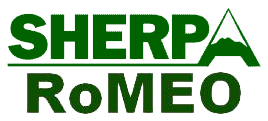El estudio científico de la literatura a través del mito de la búsqueda según los críticos anglo-norteamericanos, especialmente Northrop Frye
Abstract
All literature manifests, hypothetically, a coherent order. Writings of Sir James Fruter, T.S. Eliot. J. Campbell and R. Graves are at the origin of such a seminal intuition, but Northrop Frye is thefirst to map out systematically and coherently all the principles of its organitation. According to him al1 literary stories and images cluster around the main and most imporrant story: the loss and regaining of identity or the quest-myth. A critical imagination can explore this order through its twofold aspects, myth and imagery. From the point of view of myth, there are four main narrative parterns forming the entire quest: romance, tragedy, ironylsatire and comedy. Concepts such as phase, mode and displacement are basic to this narrative order of words. The thematic (or lyric) aspect of the quest, which usually doesn't te11 a story, displays similar corresponding patterns tu the narrative. As far as imagery is concerned, the paper narrows down Frye's archetypal imagery to four categories to make it coincide with the four main narrative and thematic arguments. Finally, the imaginative role of the questing reader is discussed. Thus, criticism or the scientific study of literature is possible because of the very unifying principie of the quest-myth. The reader's scientijic, critical or creative quest may be carried out because of Frye's conception of literature as a whole under the quest-myth. which, according to him, is the centre not only of al1 literature but also of the imaginative or creative experience of the reader. Briefly, the paper condenses in eighteen pages Frye's intricate criticism hoping to achieve some overall understanding and practical use.Downloads
Issue
Section
License
Las obras que se publican en esta revista están sujetas a los siguientes términos:
1. El Servicio de Publicaciones de la Universidad de Murcia (la editorial) conserva los derechos patrimoniales (copyright) de las obras publicadas, y favorece y permite la reutilización de las mismas bajo la licencia de uso indicada en el punto 2.
2. Las obras se publican en la edición electrónica de la revista bajo una licencia Creative Commons Reconocimiento-NoComercial-SinObraDerivada 3.0 España (texto legal). Se pueden copiar, usar, difundir, transmitir y exponer públicamente, siempre que: i) se cite la autoría y la fuente original de su publicación (revista, editorial y URL de la obra); ii) no se usen para fines comerciales; iii) se mencione la existencia y especificaciones de esta licencia de uso.
3. Condiciones de auto-archivo. Se permite y se anima a los autores a difundir electrónicamente las versiones pre-print (versión antes de ser evaluada) y/o post-print (versión evaluada y aceptada para su publicación) de sus obras antes de su publicación, ya que favorece su circulación y difusión más temprana y con ello un posible aumento en su citación y alcance entre la comunidad académica. Color RoMEO: verde.



